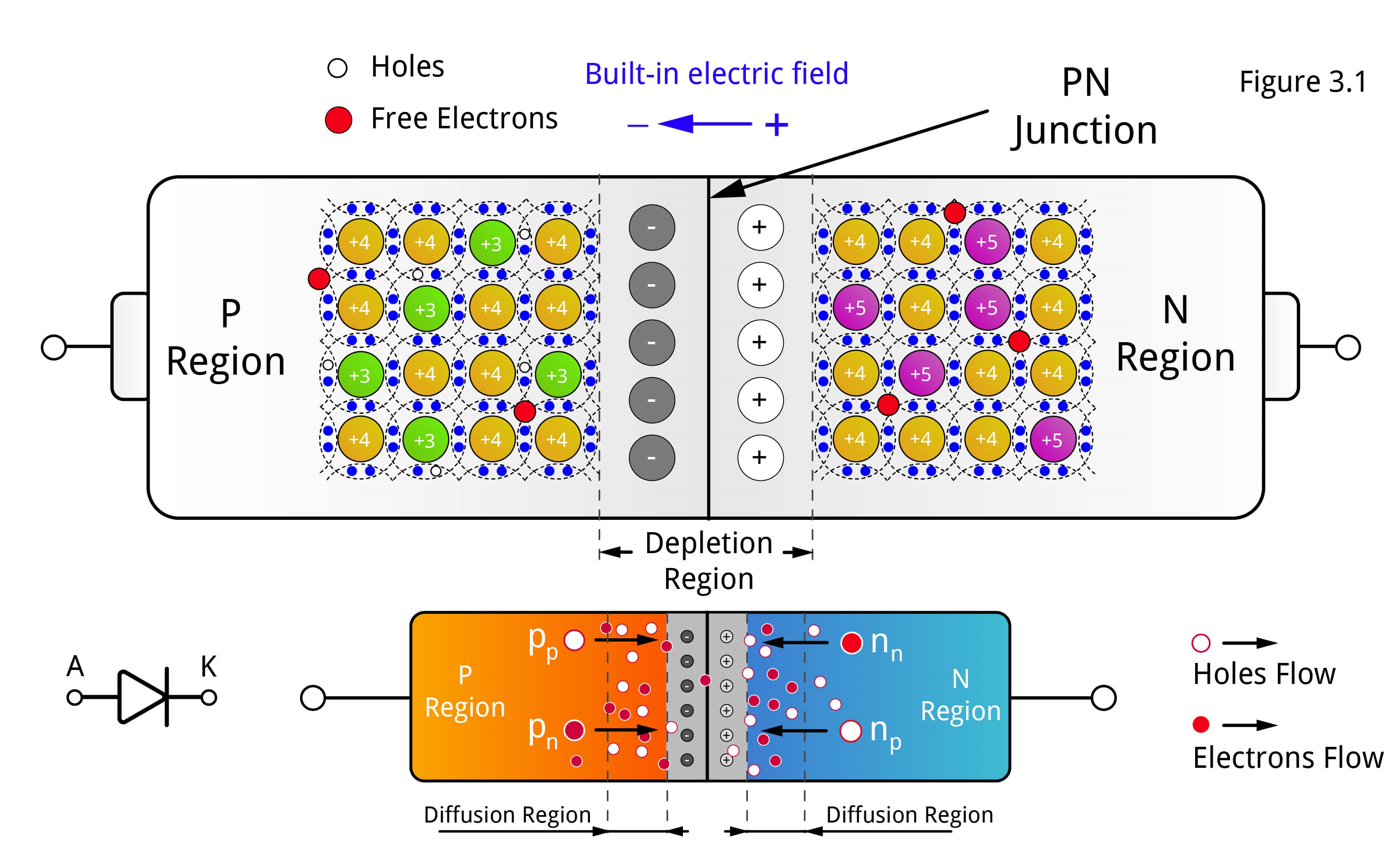Electrical Properties of pn Junction in Depletion Mode 
Procedure

Fig. 1. Basic Structure of PN Junction
Materials Required
- pn Junction Diode
- Power Supply
- Multimeter
- Connecting Wires
Procedure
- Setup the Circuit:
- Connect the pn junction diode in the circuit with the power supply and multimeter as shown in the diagram.
- Ensure the connections are secure and correct.
- Set Initial Parameters:
- Set the acceptor concentration in the p-region (NA) to a desired value (e.g., 1e15 /cm^3).
- Set the donor concentration in the n-region (ND) to a desired value (e.g., 1e15 /cm^3).
- Adjust the applied voltage (V) to a specific value (e.g., -0.5 V).
- Set the temperature (T) to a specific value (e.g., 300 K).
- Apply the Parameters:
- Turn on the power supply and apply the set parameters to the circuit.
- If using simulation software, enter the parameters into the simulation tool and run the simulation.
- Record the Data:
- Observe and record the following characteristics:
- Band Diagram: Note the energy bands across the pn junction.
- Current-Voltage Characteristics: Measure and plot the I-V curve of the diode.
- Charge Density: Determine the charge distribution across the junction.
- Electric Field: Measure the electric field intensity in the depletion region.
- Carrier Densities: Measure the concentration of electrons and holes.
- log(Carrier Densities): Plot a logarithmic view of the carrier concentrations.
- Observe and record the following characteristics:
- Analyze the Data:
- Use the recorded data to analyze the electrical properties of the pn junction:
- Calculate the Depletion Width (W) using the charge density profile.
- Determine the Built-in Potential (Vbi) from the band diagram.
- Examine the Electric Field (E) distribution within the depletion region.
- Compare the carrier densities inside and outside the depletion region.
- Use the recorded data to analyze the electrical properties of the pn junction:
- Conclude the Experiment:
- Summarize the findings and compare them with theoretical expectations.
- Discuss any discrepancies and possible sources of error.
